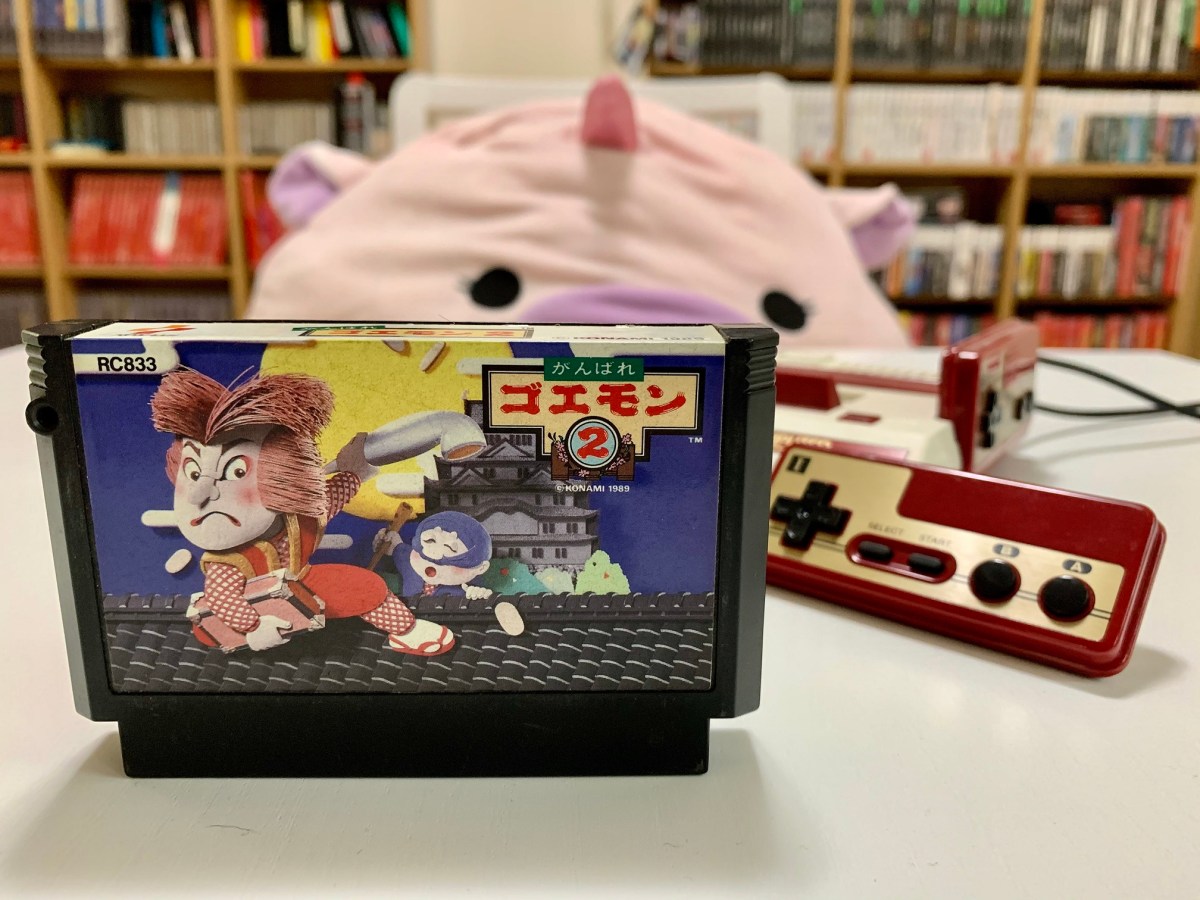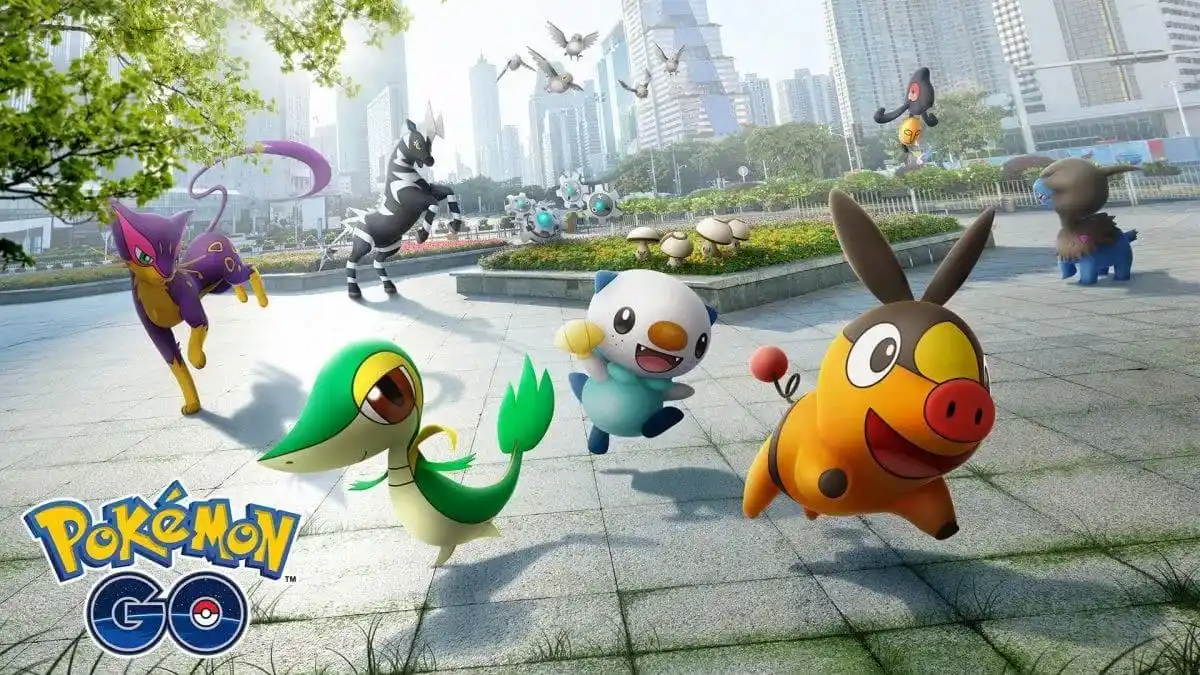Ikuze!
It’s an absolute crime that we got so few titles from the Ganbare Goemon series in the West. Not that all of them were terrific, but they almost always tried new things and were usually enjoyable. We didn’t see our first until the third (Fourth? Fifth? It’s complicated) game in the series, localized as 1992’s Legend of the Mystical Ninja on SNES.
While the original Ganbare Goemon on Famicom got the series off to a good start, it would be 1989’s Ganbare Goemon 2 that would establish one of the franchise’s hallmark features: simultaneous co-op.

As the story goes, Goemon is in prison, where he meets his soon-to-be BFF Ebisumaru. Ebisu-chan tells of a mystical treasure. Bored of life in prison, the duo decides to just leave and traipse across Japan to look for this treasure.
There’s a lot borrowed and a lot changed from the first Ganbare Goemon. The original title had a pretty strict gameplay loop of having you seek out three passes in each level to proceed. While that makes a return for some stages, Ganbare Goemon 2 shakes things up by ending others with bosses and cutscenes. There’s less emphasis on finding holes in the ground by jumping over them. It also doubles down on the mini-games and anachronism jokes.
The Goemon series has never been totally straight-faced, but there’s an obvious decline into insanity throughout the titles. Ganbare Goemon 2 for example, has yokai-interrupted strip shows, the option to run into the women’s bath, and a store that sells Konami game cartridges that changes the enemies into popular characters from other games. While there are no roller-skating giant robots just yet, the weirdness Goemon is known for is in full swing.

It’s also where Goemon really begins his traipse across Japan. Most games in the series involve him traveling around his home country, but the original Ganbare Goemon stuck to one prefecture. Here, you travel from Kyushu to Hokkaido, one level at a time. Feudal Japan is maybe not as splendiferous as it would be on the SNES, but it gives the Ganbare Goemon 2 a decent sense of variety and a tangible feeling of progression.
It can be a grind, however. Most levels subscribe to the rule of two passes being underground and one of them being in a “3D” maze. However, you can also buy passes in stores, which can be expensive. There’s no indication of where the underground passages are hidden, so you jump in slightly conspicuous spots to find them. You might just wind up buying the passes to avoid the hit and miss of leaping across the levels.
But one stage doesn’t even give you the option. You have to buy all three passes. The only ways to get money are bopping enemies and gambling, so if you haven’t managed to accumulate all the needed scratch by the time you get to that level, you’re left to grind for the rest. This is painful, especially in co-op.

It’s maybe not the best game in the Goemon series, but it is a formative title, cementing standards that would be held through the series’ run. One thing to note is that while the Ganbare Goemon series is consistently enjoyable, it’s very rarely great. Most titles have little issues that hold them back, and the formula in them changes so substantially from game to game that it never quite gets things nailed down.
Ganbare Goemon 2’s setbacks larger come down to difficulty and the need to grind. Money can get you far. Items will allow you to take extra hits, you can heal at many shops and inns around the stages, and you can even buy more lives. It makes a big difference when it comes to getting through the more difficult areas, of which there are quite a few. It’s not impossible, and I’ve made it through with a co-op partner on more than one occasion; it can just make things a lot more troublesome.

Still, there’s a lot of fun to have in co-op, as long as someone doesn’t mind being the bizarre Ebisumaru. While the first Famicom title may have arrived too early to feel the full effects of The Legend of Zelda and Metroid’s impact on console games, Ganbare Goemon 2 ditched all the old arcade hold-overs and is a much more enjoyable experience than the first game. It’s a pretty solid title for the Famicom overall.
Can you get through Ganbare Goemon 2 without knowing Japanese? That’s tough. I’ve done it multiple times knowing minimal Japanese, but it’s enough to let me know what each building does. However, the basics of gameplay are easy enough to grasp without it. Luckily, if you can’t navigate the language, there are fan translations out there that can greatly demystify things.
It was ported to the Wii U and 3DS Virtual Consoles, but only in Japan. I’m still holding out hope that Konami will bring us a Goemon collection, but considering they had M2 port Getsu Fuuma Den to modern consoles and didn’t bother translating it; forgive me if I’m doubtful.
Check out previous Famicom Fridays right here.






Published: May 1, 2022 08:00 am